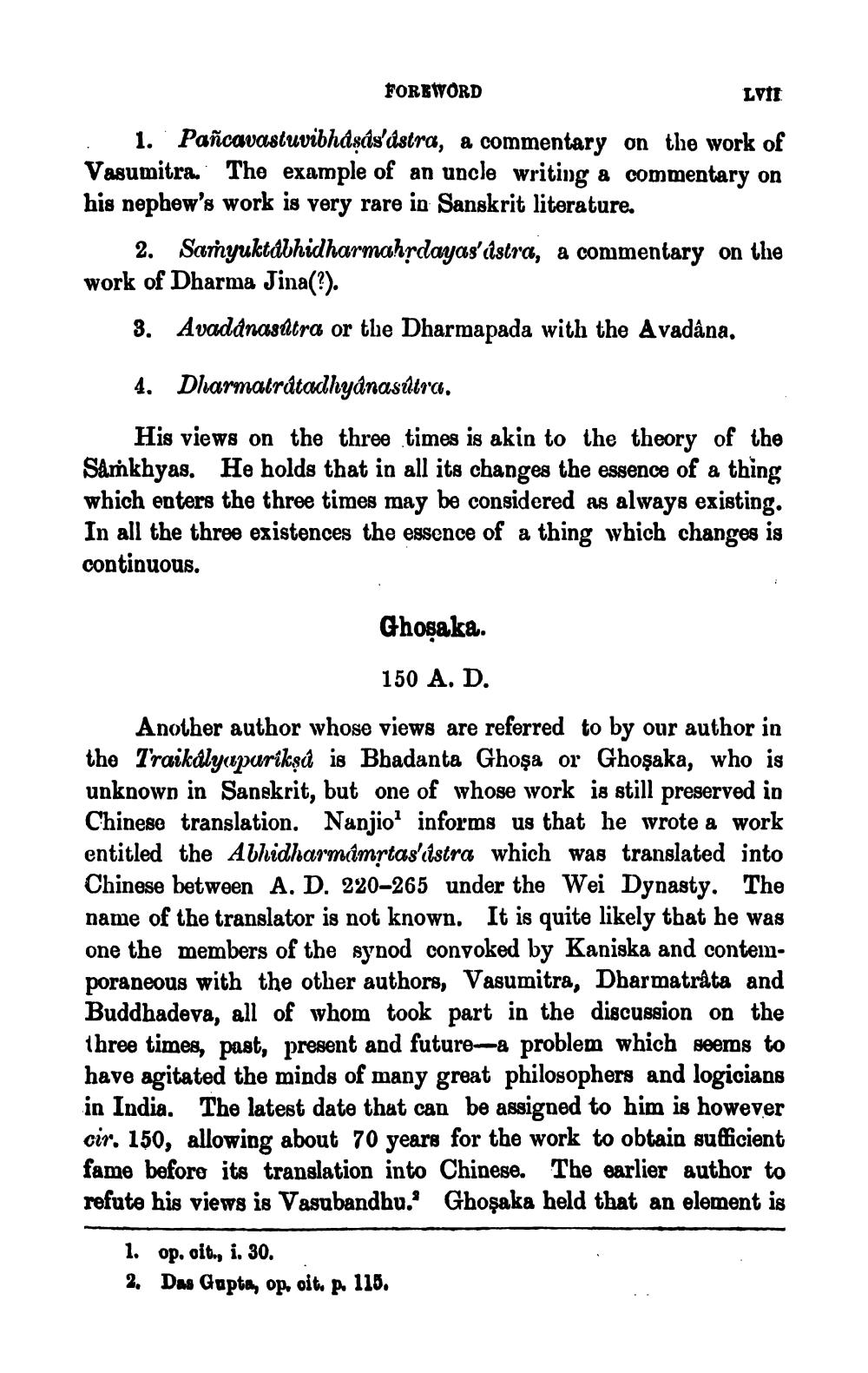________________
FOREWORD
LVIE
: 1. Pañcavastuvibhdsas'dstra, a commentary on the work of Vasumitra. The example of an uncle writing a commentary on his nephew's work is very rare in Sanskrit literature.
2. Samyuktábhidharmahrdayas' ástra, a commentary on the work of Dharma Jina(?).
3. Avadánasútra or the Dharmapada with the Avadana.
4. Dlarmatrátadhyánasútra.
His views on the three times is akin to the theory of the Sankhyas. He holds that in all its changes the essence of a thing which enters the three times may be considered as always existing. In all the three existences the essence of a thing which changes is continuous.
Ghosaka 150 A. D.
Another author whose views are referred to by our author in the Traikalyapuríkşi is Bbadanta Ghoşa or Ghoşaka, who is unknown in Sanskrit, but one of whose work is still preserved in Chinese translation. Nanjio' informs us that he wrote a work entitled the Abhidharmámrtas'ilstra which was translated into Chinese between A. D. 220-265 under the Wei Dynasty. The name of the translator is not known. It is quite likely that he was one the members of the synod convoked by Kaniska and contemporaneous with the other authors, Vasumitra, Dharmatråta and Buddhadeva, all of whom took part in the discussion on the three times, past, present and future problem which seems to have agitated the minds of many great philosophers and logicians in India. The latest date that can be assigned to him is however cir. 150, allowing about 70 years for the work to obtain sufficient fame before its translation into Chinese. The earlier author to refute his views is Vasubandbu. Ghoșaka held that an element is
1. op. oit, i. 30. 2. Das Gupta, op. oito p. 115.




